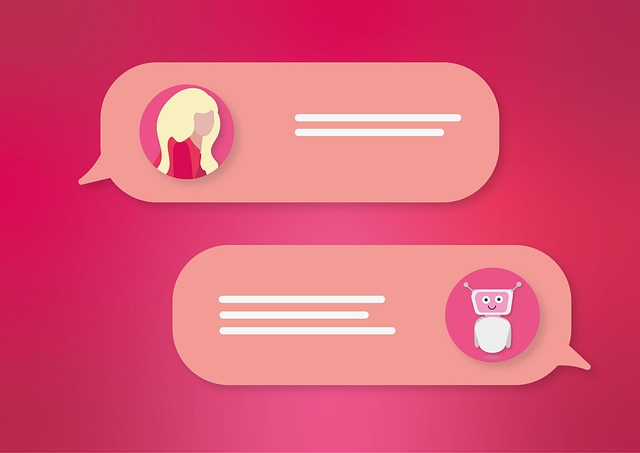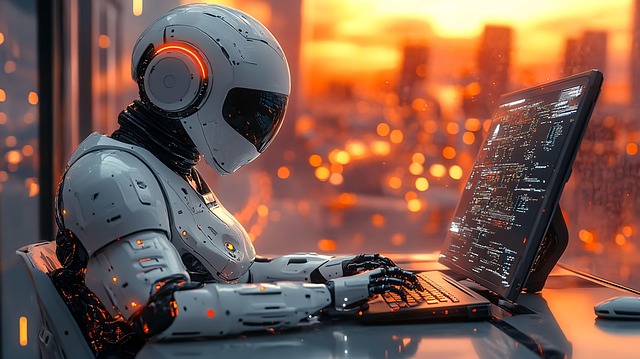AI chatbot technology has revolutionized digital interactions through natural, human-like conversations powered by advanced NLP algorithms and machine learning models. Accessible development platforms range from cloud-based drag-and-drop interfaces for beginners to custom coding options for complex projects, with open-source frameworks enabling sophisticated chatbot creation. Training and refining AI chatbots through fine-tuning with diverse data sources and regular updates ensure their effectiveness as reliable virtual assistants across various industries, leveraging online resources for continuous improvement.
Looking to dive into the world of AI chatbot creation? This comprehensive guide breaks down the process step-by-step. First, we’ll explore the fundamentals of AI chatbot technology, demystifying its inner workings and potential applications. Next, discover top-rated tools and platforms designed for building your own conversational AI. Finally, learn how to train and refine your chatbot to deliver accurate, engaging responses in any online interaction.
- Understanding AI Chatbot Technology
- Developing Your Chatbot: Tools and Platforms
- Training and Refining Your AI Chatbot
Understanding AI Chatbot Technology

AI chatbot technology has revolutionized the way we interact with digital assistants, offering a more natural and human-like conversational experience. At their core, these chatbots are powered by advanced natural language processing (NLP) algorithms that enable them to understand and interpret human language, both written and spoken. The rise of AI chatbots online has transformed various industries, from customer service to healthcare, by providing quick, efficient, and personalized assistance.
These intelligent systems learn from vast amounts of data, allowing them to evolve over time. They can adapt to different user queries, provide relevant responses, and even engage in context-aware conversations. The technology behind AI chatbots involves intricate machine learning models that analyze patterns, generate answers, and continuously improve through feedback loops, ensuring a dynamic and ever-learning digital companion.
Developing Your Chatbot: Tools and Platforms

Developing your chatbot involves choosing the right tools and platforms, especially with the advancement of AI technology. There are numerous options available for creating AI chatbots online, catering to different skill levels and project requirements. For beginners, cloud-based platforms offer drag-and-drop interfaces and pre-built templates, making it easy to create simple chatbots without coding knowledge. These platforms often provide features like natural language processing (NLP) and machine learning capabilities out of the box.
As your project evolves, you can explore more advanced options, such as custom chatbot development using programming languages like Python or JavaScript. These offer greater flexibility and allow for the integration of complex AI algorithms and machine learning models. Open-source frameworks and libraries also play a significant role in the development of sophisticated chatbots, providing developers with the tools to build intelligent conversational agents capable of understanding nuanced language and context.
Training and Refining Your AI Chatbot

Training and refining your AI chatbot is a crucial step in its development, ensuring it becomes an effective tool for users. Once your initial prototype is ready, expose it to vast amounts of data relevant to its intended purpose. This process, often called fine-tuning, allows the chatbot to learn from real-world interactions and adapt its responses accordingly. By training on diverse datasets, including various user queries and contexts, you enable the AI to provide more accurate and contextually appropriate answers.
Online availability of such data is a significant advantage in building ai chatbots. The internet offers an extensive range of sources, from open-domain conversations to domain-specific knowledge bases. Utilize these resources to teach your chatbot about language nuances, common queries, and industry-specific terminology. Regularly review and update the training data to keep the chatbot current with evolving trends and user needs, ensuring it remains a reliable and up-to-date virtual assistant.
Creating an effective AI chatbot is no longer a complex task thanks to the availability of powerful tools and platforms. By understanding the fundamentals of AI chatbot technology, selecting the right development environment, and continuously refining through training, you can build robust virtual assistants that enhance user interactions across various industries. Incorporating these steps into your strategy ensures your ai chatbots online deliver accurate, engaging, and personalized experiences, setting the stage for increased customer satisfaction and business growth.
